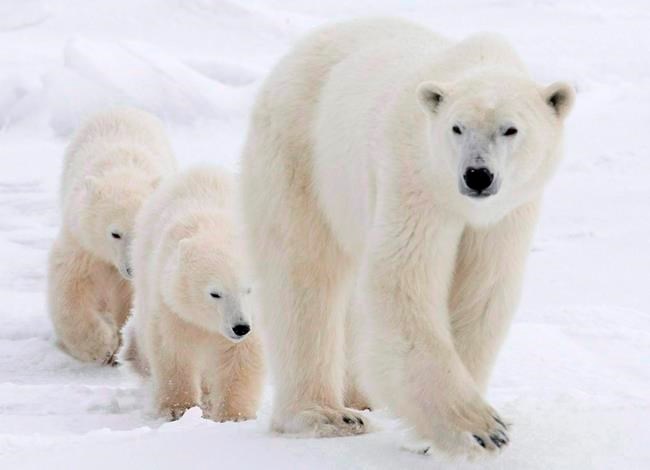Scientists fear Canadian polar bears may be threatened by the spread of avian flu after officials confirmed the disease killed a bear in Alaska.
"There's a very high likelihood that it is (in Canadian bears)," said Andrew Derocher, a leading polar bear biologist at the University of Alberta.
"It's there. We just aren't looking for it."
Last month, officials with the U.S. Department of Agriculture confirmed the H5N1 strain of avian flu killed a polar bear, found in October near the Alaskan town of Utqiagvik about 500 kilometres from the Yukon border. Polar bears range hundreds of kilometres and the dead bear was part of a population shared by both countries.
The virus first showed up in Yukon more than a year ago in a red fox, said territorial veterinarian Jane Harms.
"This strain of avian flu seems to have the ability to infect and cause disease in mammals of a variety of types," she said. "The fact this virus can cause disease and death in polar bears, as well as other species, is of concern."
It's not clear yet how far the virus has spread among Arctic mammals. Alaska has found it in red foxes, a black bear and a Kodiak bear.
Harms said it seems so far it is being spread when mammals eat infected birds.
"In most cases, wild mammals are being infected by scavenging tissues of infected birds. It does not seem to be transmitted mammal to mammal."
But Derocher said climate change is likely increasing the bears' exposure, as diminishing sea ice keeps them on shore longer and forces them to subsist on prey such as dead birds. Those extended shorebound periods of relative scarcity also weaken the bears.
"Immune system function goes down. With weakened immune systems, they're more likely to succumb."
As well, polar bears are more vulnerable to viruses than other bears, said John Whiteman, chief researcher at Polar Bears International and professor at Old Dominion University in Virginia. While evolving for the Arctic, they lost much of their genetic "library" of possible pathogens and how to resist them.
"If you can recognize a lot of pathogens, you're in better shape to fight them off," said Whiteman. "Polar bears don't recognize a lot of pathogens."
Climate change has stirred the pot on viruses around the world, he said.
"We know that pathogens are changing their distribution and some of them that may not have been able to survive the north slope of Alaska are gaining a foothold."
Avian flu is now found on every continent except Australia.
Both Whiteman and Derocher called for better monitoring of wildlife diseases.
Harms said Yukon regularly performs necropsies on dead wildlife, but more needs to be done. Confirming avian flu requires extra testing, she said.
"The reality is we probably would have more avian flu virus infection in mammals if we had the ability to look for it."
The Southern Beaufort population of which the dead bear was a member is estimated to be about 900 strong, although it's hard to be sure with polar bears. That population is considered to have declined by about 50 per cent since the 1980s, said Derocher.
The virus has hit other mammals hard. Scientists have linked it to the deaths of nearly 500 seals in Maine over the last two years.
But both Derocher and Whiteman say one bear death isn't enough to push the virus panic button.
"I would put it in the category of a little alarming," said Whiteman. "This threat still has so much unknown to it. But there is a potential for mortality.
"By far, the biggest threat to this species is the loss of sea ice."
This report by The Canadian Press was first published Jan. 4, 2024.
Bob Weber, The Canadian Press



